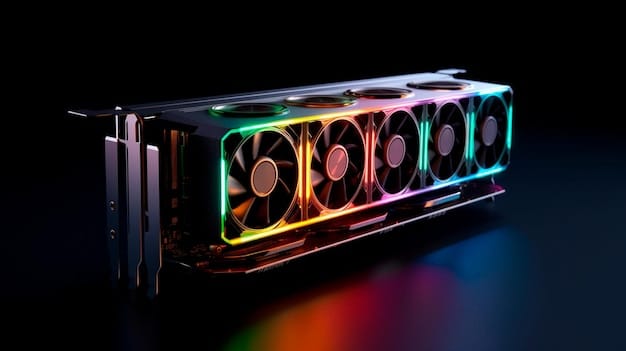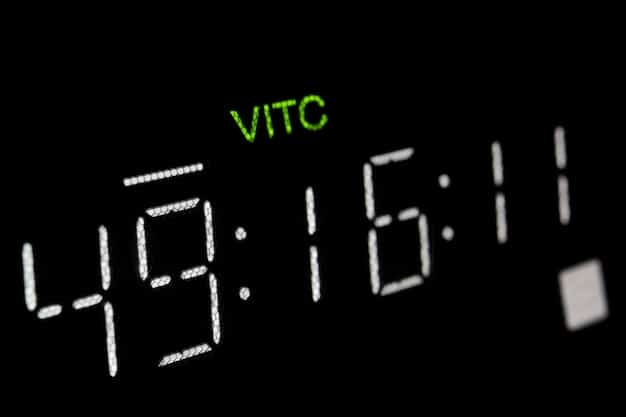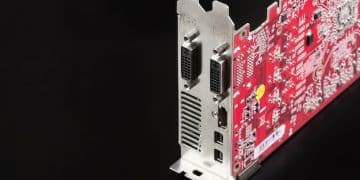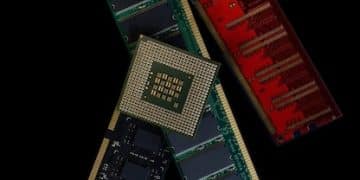The Ultimate RTX 4080 Overclocking Guide for Peak 2025 Performance

The Ultimate RTX 4080 Overclocking Guide: Squeeze Out Every Last Frame in 2025 provides a comprehensive walkthrough on maximizing your RTX 4080’s potential, covering essential tools, software, and step-by-step instructions for achieving optimal performance boosts.
Ready to push your RTX 4080 to its absolute limit? This The Ultimate RTX 4080 Overclocking Guide: Squeeze Out Every Last Frame in 2025 will provide you with everything you need to unlock hidden performance and dominate your favorite games in 2025.
Understanding RTX 4080 Overclocking
Overclocking your RTX 4080 can significantly enhance its performance, allowing for higher frame rates and smoother gameplay. Before diving in, it’s crucial to understand the basics and potential risks involved.
What is Overclocking?
Overclocking involves pushing the GPU’s clock speeds beyond its default settings. This increases the processing power, resulting in better performance in games and other graphically intensive applications.
Why Overclock the RTX 4080?
The RTX 4080 is already a powerful card, but overclocking provides an extra edge. It can help maintain high frame rates at higher resolutions and settings, ensuring a superior gaming experience, especially as games become more demanding.
- Increased Frame Rates: Enjoy smoother gameplay with higher FPS in your favorite titles.
- Enhanced Gaming Experience: Maximize visual settings without sacrificing performance.
- Future-Proofing: Keep your card relevant as games become more graphically intensive.
However, remember that overclocking isn’t without risks. It can increase heat output and potentially reduce the lifespan of your components if not done correctly. Always proceed with caution and monitor your system closely.

In summary, overclocking your RTX 4080 can unlock significant performance gains, but it requires a careful and informed approach. Understanding the basics and potential risks is the first step towards achieving a stable and effective overclock.
Essential Tools and Software
To effectively overclock your RTX 4080, you’ll need a few key tools and software. These will help you monitor your GPU’s performance, adjust settings, and ensure stability.
Monitoring Software: GPU-Z
GPU-Z is a lightweight utility that provides detailed information about your graphics card. It allows you to monitor clock speeds, temperatures, and other critical parameters in real-time.
Overclocking Software: MSI Afterburner
MSI Afterburner is one of the most popular overclocking tools available. It provides a user-friendly interface for adjusting GPU clock speeds, memory speeds, voltage, and fan settings.
- Clock Speed Adjustment: Easily adjust the core and memory clock speeds.
- Voltage Control: Increase voltage to stabilize higher clock speeds (use with caution).
- Fan Control: Customize fan curves to manage temperature.
In addition to GPU-Z and MSI Afterburner, consider using benchmarking software like 3DMark or Unigine Heaven. These tools allow you to test the stability of your overclock and measure performance gains.
Having the right tools is essential for a successful overclocking experience. GPU-Z and MSI Afterburner provide the necessary monitoring and adjustment capabilities to fine-tune your RTX 4080’s performance.
Preparing Your System for Overclocking
Before you start overclocking, it’s important to ensure your system is properly prepared. This includes adequate cooling, a reliable power supply, and the latest drivers.
Adequate Cooling
Overclocking increases heat output, so having sufficient cooling is crucial. Consider using an aftermarket cooler, such as a liquid cooler or a high-performance air cooler, to keep temperatures in check.
Reliable Power Supply
A stable power supply is essential for overclocking. Ensure your PSU has enough wattage to handle the increased power draw of the overclocked RTX 4080, as well as the rest of your system components. A PSU with at least 850W is generally recommended.
Additionally, make sure you have the latest drivers installed for your RTX 4080. Updated drivers often include performance optimizations and bug fixes that can improve stability while overclocking.
- Check Temperatures: Monitor GPU temperatures under load before overclocking.
- Stress Test: Run stress tests to ensure your system is stable at stock settings.
- Update Drivers: Download and install the latest drivers from NVIDIA’s website.

Preparing your system with adequate cooling, a reliable power supply, and the latest drivers will help ensure a safe and successful overclocking experience. Take the time to optimize these aspects before pushing your RTX 4080 to its limits.
Step-by-Step Overclocking Guide
Now that you have the necessary tools and have prepared your system, it’s time to start overclocking. Follow these steps to safely and effectively overclock your RTX 4080.
Install Monitoring Software
First, install GPU-Z to monitor your GPU’s clock speeds, temperatures, and voltage. This will provide real-time data to help you adjust settings and maintain stability.
Adjusting Clock Speeds
Open MSI Afterburner and gradually increase the core clock speed in small increments (e.g., 25-50 MHz). After each adjustment, run a benchmark or stress test to check for stability. If you encounter crashes or artifacts, reduce the clock speed. Next, increase the memory clock, also in smaller increments.
- Incrementally Increase Clock Speeds: Increase the core and memory clocks in small increments.
- Test for Stability: Run benchmarks after each adjustment to check for crashes.
- Monitor Temperatures: Keep an eye on GPU temperatures to prevent overheating.
Continue adjusting clock speeds until you reach a point where the system becomes unstable or temperatures become too high. At this point, you may need to increase the voltage to stabilize the overclock. However, use caution when increasing voltage, as it can significantly increase heat output and power consumption.
Carefully adjusting clock speeds and monitoring stability is key to a successful overclock. By following these steps, you can gradually push your RTX 4080 to its limits while maintaining a safe and stable operating environment.
Advanced Overclocking Techniques
For experienced users, there are several advanced overclocking techniques that can further optimize performance. These include voltage tweaking, power limit adjustments, and custom fan curves.
Voltage Tweaking
Increasing the GPU voltage can help stabilize higher clock speeds, but it also increases heat output. Use this technique with caution and only if necessary. Start with small voltage increments and monitor temperatures closely.
Power Limit Adjustments
Increasing the power limit allows the GPU to draw more power, which can improve overclocking potential. However, ensure your power supply can handle the increased power draw.
Creating custom fan curves can help manage GPU temperatures more effectively. Adjust the fan speeds to increase as the temperature rises, maintaining optimal cooling performance. Use customized settings that allow your PC to run cool and efficiently.
- Monitor Power Consumption: Keep track of power draw to avoid overloading your PSU.
- Undervolting: Reduce voltage while maintaining stock speeds to lower temperatures and power consumption.
- Custom BIOS: Flash a custom BIOS for more advanced control over voltage and power settings.
Remember, use caution when applying these advanced techniques. Incorrect settings can cause instability or damage to your hardware. Always research thoroughly and proceed with awareness.
Troubleshooting Common Issues
Even with careful planning, overclocking can sometimes lead to issues like instability, crashes, or overheating. Here are some common problems and how to troubleshoot them.
Instability and Crashes
If your system becomes unstable or crashes after overclocking, reduce the clock speeds or increase the voltage. Ensure that your GPU and system is stable to avoid any damage from instability.
Overheating
If the GPU temperatures are too high, improve your cooling solution or reduce the clock speeds. A liquid cooler, an aftermarket cooler, or increased fan speeds can help maintain normal operating temperatures.
Follow this advice for troubleshooting common issues during overclocking to ensure a smooth and stable experience. Adjustments to clock speeds, voltage, and cooling can help resolve these problems and optimize performance. By being cautious and proactive, you can overcome these challenges and achieve a successful overclock.
| Key Point | Brief Description |
|---|---|
| 🔧 Preparation | Ensure adequate cooling and PSU. |
| 📈 Clock Adjustment | Incrementally increase clocks. |
| 🌡️ Monitoring | Use GPU-Z to track temperature. |
| 🛠️ Troubleshooting | Reduce clocks if unstable. |
Frequently Asked Questions
▼
GPU overclocking is the process of increasing the clock speed of your graphics card beyond its factory settings. This can lead to improved performance in games and other graphically intensive applications.
▼
Overclocking is generally safe if done correctly. Ensure proper cooling and monitoring to prevent overheating. Always increase clock speeds incrementally and test for stability to minimize risks.
▼
You’ll need monitoring software such as GPU-Z to track performance and temperatures. For overclocking purposes, MSI Afterburner is recommended, offering a user-friendly interface for adjustments.
▼
The amount you can overclock your RTX 4080 varies depending on your specific card and cooling solution. Start with small increments and test for stability to find the optimal balance between performance and safety.
▼
The primary risks of overclocking include overheating, instability, and potentially shortening the lifespan of your components. However, these risks can be minimized with proper monitoring, cooling, and incremental adjustments.
Conclusion
By following this The Ultimate RTX 4080 Overclocking Guide: Squeeze Out Every Last Frame in 2025, you can unlock the hidden potential of your RTX 4080 and achieve significant performance gains. Remember to proceed with caution, monitor your system closely, and enjoy the enhanced gaming experience!





